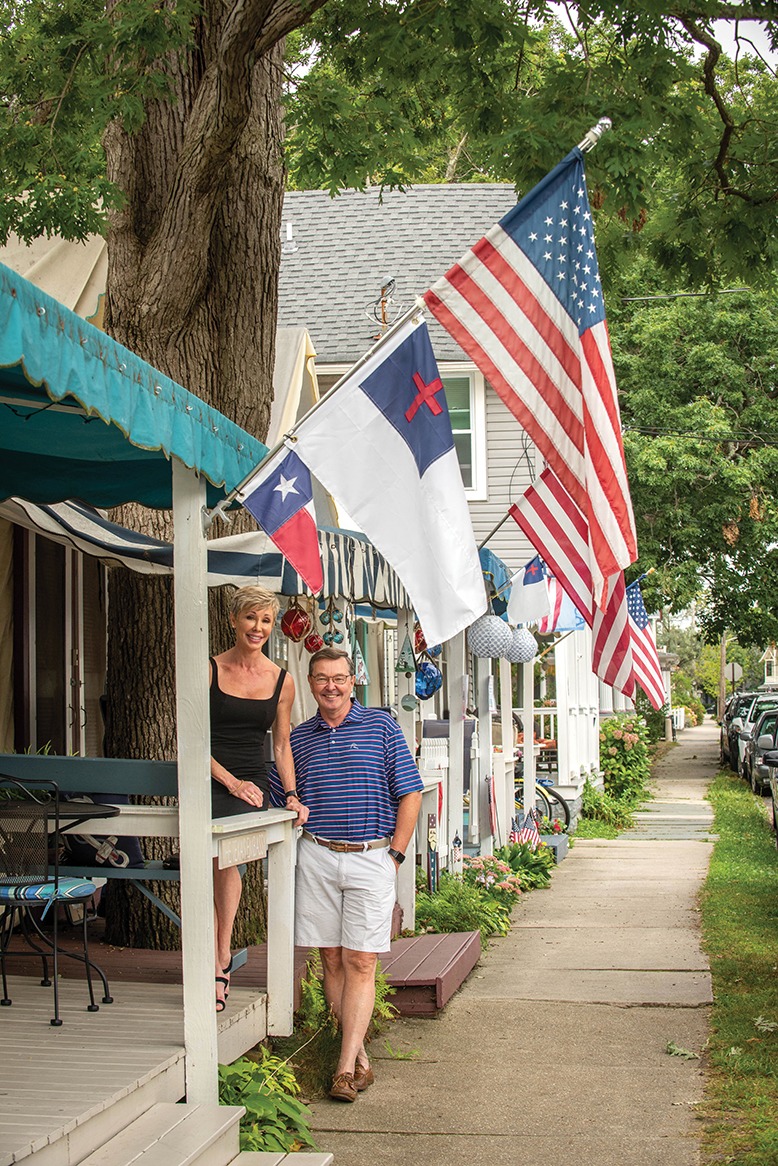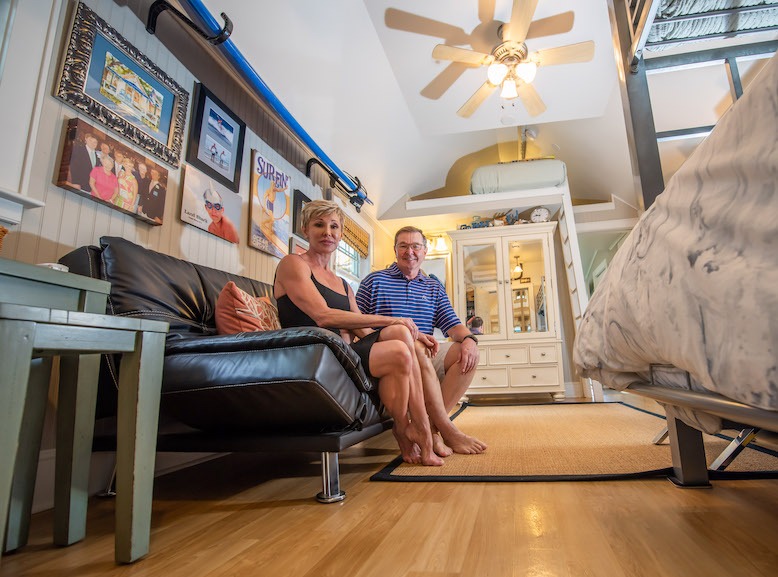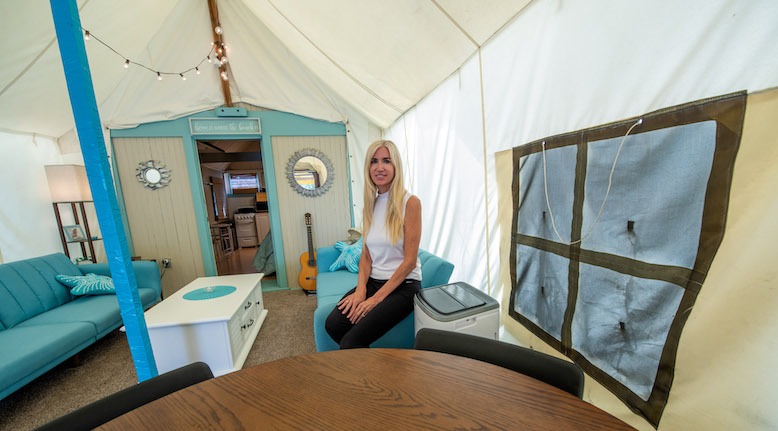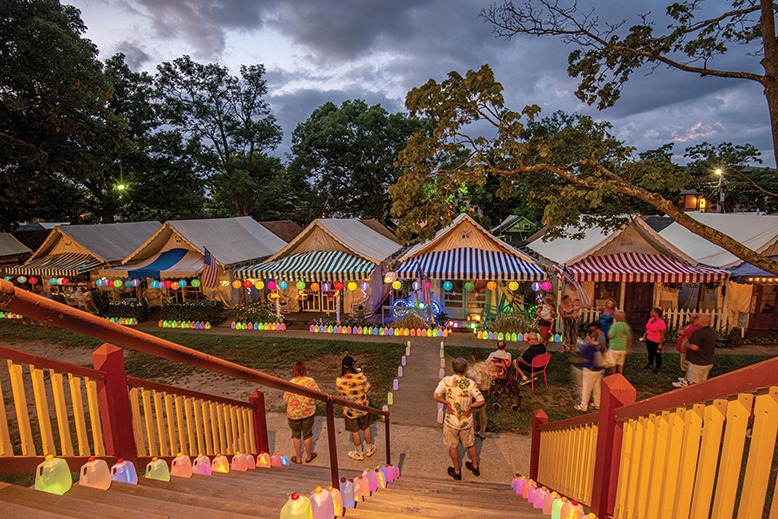
Imagine this Jersey Shore rental listing: Unfurnished small home, $8,000 from May 15 to September 15. Tented front room plus attached cabin with kitchen, toilet and shower. Covered porch. Ocean breezes from promenade and beach in quaint Victorian seaside resort on the National Register of Historic Places. Electric, water and sewer included. Air conditioner and front door not included.
In the town of Ocean Grove, that listing is real. Even with caveats related to involvement in this Christian community, more than 300 people—some of whom have been waiting since the 1980s—are on the waiting list for one of the 114 tent camps or one of the 23 larger cottages available to rent each summer.
The idea of creating semipermanent tents dates back to when Methodists founded Ocean Grove as a summer seaside retreat. In 1870, the state granted the Ocean Grove Camp Meeting Association a charter, setting Ocean Grove aside as a place of “perpetual worship to Jesus Christ.” While neighboring towns such as Asbury Park and Bradley Beach have evolved and grown with the times, Ocean Grove, or “God’s Square Mile,” remains rooted in its ministry. The Camp Meeting Association still rents the seasonal tents, owns much of the land in town, and works with the Neptune Township Historic Preservation Commission to preserve the Victorian design of residences and businesses.

Catherine and Craig Harrison have rented their current tent for 13 years. Photo by James J. Connolly
The town comes alive each May, when the canvas tents are erected and striped awnings sprout on the paths and narrow roads around the towering Great Auditorium. While the colorful awnings create a uniform look, inside the similarities end. “They’re all the same, but they are all different, like a New York City studio,” says tenter Donna Scudder, who, with her husband and daughter, has rented for 10 summers.
The front room, or canvas room, in each tent is covered by a canvas roof framed by a wooden structure on three sides, with a front door individually purchased by tenters. Creating a seamless, enclosed space, the canvas room is attached to the cabin, with a kitchen, toilet and shower. The total enclosed space is roughly 600 square feet. Many tenters have ingeniously carved out spaces for everything from tiny bedrooms with bunk beds to areas for the most prized possession of all: a stacked washer and dryer.
Tenters are not required to be Methodists, but the nondenominational association expects them to pray and believe in God. These requirements are detailed on the paper application—no online option is available—and discussed at in-person interviews.
Every tenter volunteers or pitches in as a worker bee. For the Mitchell family, their teenage daughter provides religious instruction at a vacation bible school. Their son checks beach badges.

The Harrisons, like many tenters, have bunk beds inside their rental. Photo by James J. Connolly
Family ties also play a major role in the selection process. Craig Harrison’s maternal grandparents owned houses in Ocean Grove, as did his parents and three cousins. After Craig moved away, married Catherine, and had children, his family applied for a tent rental, were accepted, and joined the waiting list.
Five years later, they were offered a lease on a starter tent on Bethany Block. “You could hang out of the shower and stir something on the stove,” says Catherine.
With three young boys, they needed more space. Eventually, they moved to a tent on Mt. Carmel Way, where they have summered for 13 years. They invested about $80,000 in redoing the larger, outdated tent—money they’ll never get back, because they’re renters, after all. But they were happy to make renovations, knowing that as long as they abide by the rules and stay active in religious instruction, they will be welcomed back each year. And if one of their sons is wants to be involved with the community, he will likely skip the waiting list and be granted a “generational hand-off”; as Catherine says, her family acts as “stewards of history.”

Aly Giglio and her family prepared for their first summer in 2021 by watching a lot of YouTube videos and HGTV’s “Tiny House, Big Living. Photo by James J. Connolly
For other tenters, like Joel Popkin, having a tent is a longtime dream. Popkin, who has lived in Ocean Grove for 13 years and is now retired, says, “It was always a desire to live in a tent for the summer.” After being on the list for seven or eight years, in 2019 he agreed to rent a tent that “needed a lot of work.” Joel and his golden doodle, CoCo, often spend the day out on the porch. Because pets are not permitted, Popkin and his pooch returns home each night to their permanent home.
Being a tenter requires a minimalist approach to living. Raphael and Aly Giglio and their 14-year-old twins rented for the first time in 2021. To plan, Aly and her daughters watched lots of YouTube videos and HGTV’s “Tiny House, Big Living.” Among their top purchases? Futons that function as sofas during the day and beds at night.
The Giglios had to bring their own air conditioner and fan, which helped reduce ambient noise at night. “With the tents being so close, I was surprised that I could sleep,” says Aly. It also helps that the association expects tenters to respect designated quiet time between 10 pm and 7:30 am.

Night activities wrap up by 10 pm, when quiet hours go into effect. Photo by James J. Connolly
For non-residents interested in seeing the tent community, the tents are located along public streets and public walkways, so the exterior can be viewed and enjoyed any time. However, the canvas tenting and awnings are only up when the tents are occupied between mid-May and mid-September. The tents are not open for tours.
